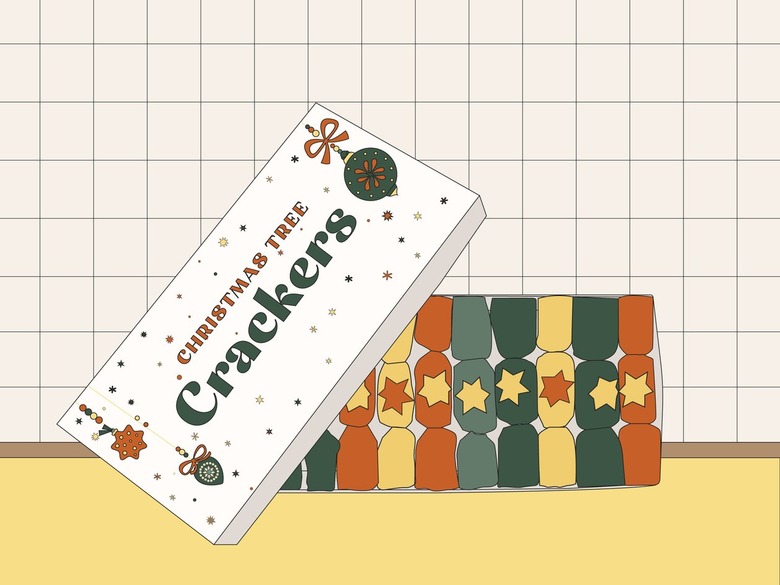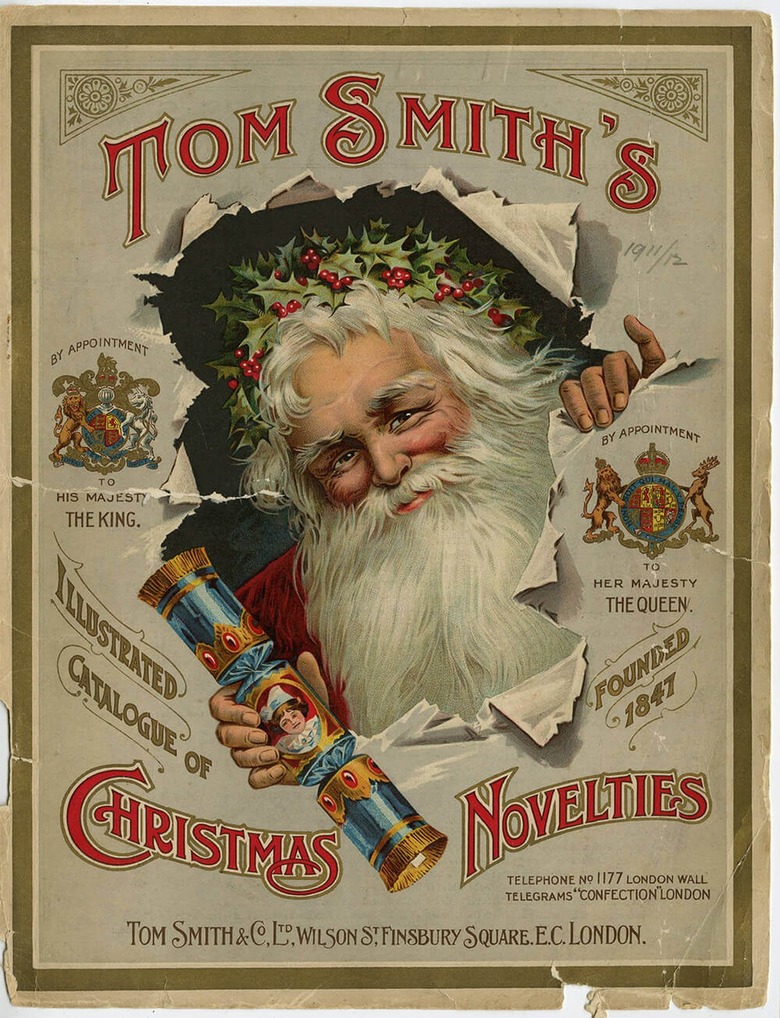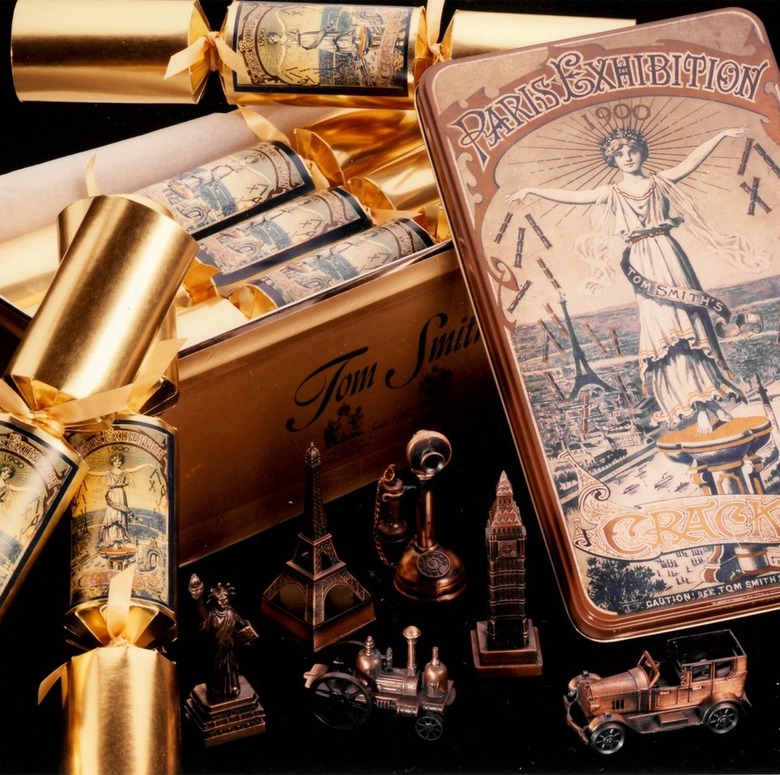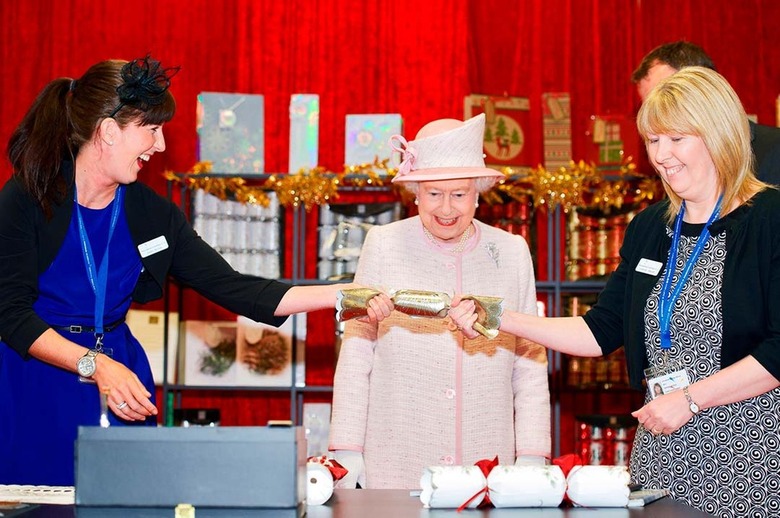The Man Who Invented The Christmas Cracker Was Inspired By A Sweet Treat
Christmas crackers are a traditional part of holiday merrymaking that bring about an instantaneous feeling of joy. They are vibrant party favors that are typically set on dinner plates at Christmas gatherings, causing guests to wait in suspense for the opening of the crackers, which produce a loud pop.
Though they originated in England and remain popular across the Commonwealth, the Christmas cracker's popularity has spread far beyond those destinations. Today, they are enjoyed throughout the festive season by many around the world.
What is a Christmas cracker? What do you put inside it?
What is a Christmas cracker? What do you put inside it?
Christmas crackers come in the form of a small tube that is wrapped in brightly colored paper and twisted at both ends. Inside each tube is usually a paper hat, a joke, and a small toy or trinket. To "crack" open the tube, two people will pull on each end until it snaps and produces a popping noise (thus the "cracker" part of the name). The strip of paper with the joke on it is then read aloud by the winner (aka the person who gets the longer end once the cracker breaks apart).
The modern Christmas cracker can be filled with pretty much anything. Like advent calendars, some remain traditional, while others have veered into new industries like beauty and wine.
Who invented the Christmas cracker?
Who invented the Christmas cracker?
The tradition of Christmas crackers is said to date back to the 1840s, when a London confectioner named Tom Smith decided to riff on the French bonbon, a paper-wrapped treat, according to the Victoria & Albert Museum.
Smith's crackers didn't actually crack at all — they were just paper tubes filled with candy and sold at Christmastime. He later added love poems to make them have a longer-lasting shelf life. Eventually, his son came up with the idea to fill the crackers with trinkets like paper hats, small gifts from across Europe and abroad, and jokes — and the Christmas cracker as we now know it was born.
As for that loud "crack," Smith was said to have been inspired by crackling logs in a fire. His original patented mechanism from 1847 used a small silver fulminate explosion to create the loud pop, but he spent the next 20 years perfecting the technique.
In 1906, the Tom Smith company, which had been making crackers for nearly 60 years at that point, was issued a royal warrant. Since then, the company has been the official supplier of Christmas crackers and wrapping to the monarch.
How to make a Christmas cracker:
How to make a Christmas cracker:
Though it's not that easy to DIY the "crack" sound of Christmas crackers, it's simple enough to create your own paper tubes that hold gifts in the traditional cracker style.
Things Needed
-
Toilet paper or paper towel rolls (one per cracker)
-
Wrapping paper (you can use traditional Christmas wrapping paper or get creative with any patterned or solid-color wrapping paper)
-
Tape
-
Ribbon or string
-
Gifts to put inside each tube (could be anything from a bottle of nail polish to some sweets)
-
Scissors
Step 1
Cut a sheet of wrapping paper long enough to wrap around the tube, with plenty of room at the ends to create the cracker's twists.
Step 2
Wrap the tube with the paper and tape it into place. Twist one end and tie it with a ribbon or string for extra decoration.
Step 3
Place your cracker gifts into the tube, then twist and tie off the other end of the wrapping paper. Now, enjoy the fun!




